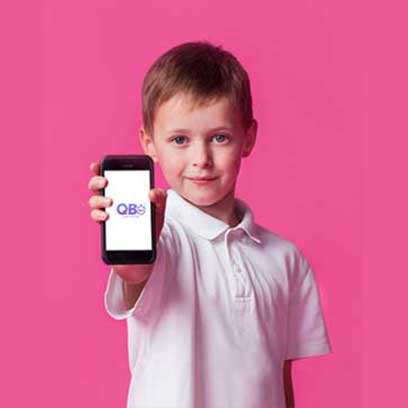CBSE 10th Standard Maths Subject Probability Ncert Exemplar 2 Marks Questions 2021
By QB365 on 26 May, 2021
QB365 Provides the updated NCERT Examplar Questions for Class 10 Maths, and also provide the detail solution for each and every ncert examplar questions , QB365 will give all kind of study materials will help to get more marks
QB365 - Question Bank Software
CBSE 10th Standard Maths Subject Probability Ncert Exemplar 2 Marks Questions 2021
10th Standard CBSE
-
Reg.No. :
Maths
-
A letter of English alphabet is chosen at random. Determine the probability that the letter is a Consonant.
(a) -
A ticket is drawn at random from a bag containing tickets numbered from 1 to 40. Find the probability that the selected ticket has a number,
(i) which is a multiple of 7
(ii) which is a multiple of 5.(a) -
There are 1000 sealed envelopes in a box, 10 of them contain a cash prize of Rs. 100 each, 100 of them contain a cash prize of Rs. 50 each and 200 of them contain a cash and an envelope is picked up out, what is the probability that it contains no cash prize?
(a) -
A bag contains slips numbered from 1 to 100. If Fatima chooses a slip at random from the bag, it will either be an odd number or an even number. Since this situation has only two possible outcomes, so, the probability of each is \(\frac{1}{2}\). Justify.
(a) -
In a family having three children, there may bo no girl, two girls or three girls. So, the probability of each is \(\frac{1}{4}\). Is this correct? Justify your answer.
(a) -
Apoorv throws two dice once and computes the product of the numbers appearing on the dice. Peehu throws one die and squares the number that appears on it. Who has the better chance of getting the number 36? Why?
(a) -
A student says that if you throw a die, it will show up 1 or not 1. Therefore, the probability of getting 1 and the probability of getting 'not 1' each is equal to \(\frac{1}{2}\). Is this correct? Give reasons.
(a) -
Two dice are thrown at the same time. Determine the probability that the difference of the numbers on the two dice is 2.
(a) -
Two dice are thrown at the same time and the product of numbers appearing on them is noted.Find the probability that the product is less than 9.
(a) -
Apooru throws two dice once and completes the product of the numbers appearing on the dice. Peehu throws one die and squares the number that appears on it. Who has the better chance of getting the number 36? Why?
(a)
2 Marks
*****************************************
CBSE 10th Standard Maths Subject Probability Ncert Exemplar 2 Marks Questions 2021 Answer Keys
-
We know that in English alphabet, there are 26 letters (5 vowels + 21 consonants).
So, total number of outcomes = 26
Let E be the event of choosing a consonant.
\(\therefore\) Number of outcomes favourable to E = 21
Hence, required probability = \(P(E)=\frac{21}{26}\) -
Total number of tickets = 40 and multiple of 5 are 5, 10, 15, 20, 25, 30, 35, 40
P(a number which is a multiple of 5)
\(=\frac{8}{40}=\frac{1}{5}\) -
Total number of enevelopes = 1000
Let A = envelope contains no cash
Number of envelopes containing no cash
= 1000 - (10 + 100 + 200) = 690
\(\therefore\) P(A) = \(\frac{690}{100}=\frac{69}{100}=0.69\) -
Yes, P (even number) = \(\frac{50}{100}=\frac{1}{2};\)
P (odd number) = \(\frac{50}{100}=\frac{1}{2}\) -
Total cases are 8. (GGG), (GGB), (GBG), (GBB), (BGG), (BGB), (BGG), (BBB)
no girl = \(\frac{1}{8}\); one girl = \(\frac{3}{8}\);
2 girls = \(\frac{3}{8}\); 3 girls = \(\frac{1}{8}\) -
For Apoorv if he getting (6, 6) then he gets = Number 36
Then Probability of getting (6, 6) = \(\frac{1}{36}\)
But Peehu got 36 when he got 6,
Probability of getting 6 = \(\frac{1}{6}\) -
No, \(\therefore P(1)=\frac{1}{6} \) But P(not 1)
It means P(2, 3, 4, 5, 6) = \(\frac{5}{6}\) -
When two dice are thrown at the same time, then all possible outcomes are 6 x 6 i.e., 36.
Number of outcomes with difference of numbers on the two is
i.e., [(1,3), (2,4), (3,1), (3,5), (4,2), (4,6), (5,3), (6,4)] =8
Required Probability \(={8\over36}={2\over9}\) -
When two dice are thrown simultaneously then sample space contains (6 X 6 = 36) outcomes.
Product of numbers is less than 9.
[(1,1), (1,2), (1,3), (1 ,4), (1,5), (1 ,6), (2,1), (2,2), (2,3), (2,4), (3, 1), (3,2), (4, 1), (4,2), (5, 1), (6,1)] i.e., 16 outcomes
\(\therefore\) P (product < 9) =\(\frac { 16 }{ 36 } =\frac { 4 }{ 9 } \) -
A poor throws two dice once.
So, total number of outcomes, n(S)=36
Number of outcomes for getting product 36,
n(E1)=1, i.e. (6,6)
∴ Probability for Apooru\(=\frac { n(E_{ 1 }) }{ n(S) } =\frac { 1 }{ 36 } \)
Also, Peehu throws one die.
So, total number of outcomes, n(S)=6
Number of outcomes for getting 36 which is square of number 6, b(E2)=1
So, probability for Peehu\(=\frac { n(E_{ 2 }) }{ n(S) } =\frac { 1 }{ 6 } =\frac { 6 }{ 36 } \)
Hence, Peehu has better chance of getting the number 36.
2 Marks

























